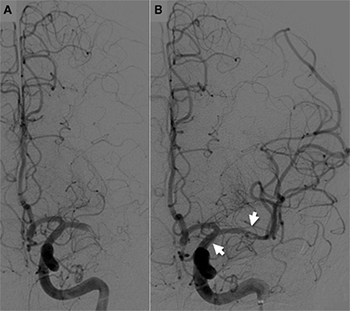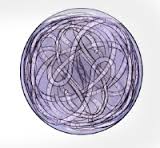
Texas Stroke Institute physicians practice multi-disciplinary medicine to drive best practice in patient care. We can successfully treat disease processes and conditions that once upon a time required neurosurgeons to treat surgically with lengthy hospital stays and complex recovery needs.
Minimally invasive procedures are most commonly done through a small incision or puncture in femoral artery (groin). Image guidance is used to facilitate catheter (small tube) placement in the area of interest. The catheter can then be used to deliver the following treatments:
- Intra-venous and Intra-arterial thrombolysis (IV-rtPA)
- This allows delivery of the clot busting medication directly into a vessel that is partially or completely occluded (blocked) in efforts to restore blood flow.
- Retinal Strokes: Intra-arterial thrombolysis or clot-dissolving therapy
- Cerebral Sinus Thrombosis: Intra-arterial thrombolysis or clot dissolving therapy
- This allows delivery of the clot busting medication directly into a vessel that is partially or completely occluded (blocked) in efforts to restore blood flow.
- Mechanical thrombectomy

- One of these devices (the Trevo, Merci Retriever, Solitaire) to assist in removing a blood clot. One or more of these catheters devices could be used.
- Mechanical clot-aspiration therapy
- Penumbra is a vacuum type catheter placed close to the blockage and is used to extract or remove the clot.
- Cerebral Sinus Thrombosis: Mechanical clot-retrieval therapy
- Penumbra is a vacuum type catheter placed close to the blockage and is used to extract or remove the clot.
- Intra-arterial vaso-dilator therapy
- Facilitates the delivery of medication directly to the targeted blood vessel and in order to improve blood flow. This is done usually when a vessel is irritated and spasms after a hemorrhagic stroke.
- Arteriovenous Malformation (AVM): An abnormal communication between an artery and vein that may be present at birth or may result from injury or infection. Blood may flow directly from the artery to the vein, bypassing the small vessels where oxygen and tissue nutrients are exchanged. These unusual malformations are often found in the brain and spinal cord, but may occur anywhere in the body.
- A tangle of dilated blood vessels that disrupts normal blood flow in the brain.
- ONYX Embolization

- ONYX is a glue like substance delivered to an isolated vessel or group of vessels to stop blood flow. This is often used for arteriovenous malformations or presurgical treatment vascular tumors.
- Balloon and stent assisted coil embolization
- A stent is placed across the opening of an aneurysm. A balloon is used to open the stent against the vessel wall. Then coils are placed into the sac of the aneurysm to stop blood flow.
- Flow diverters

- A covered stent is placed across the opening of an aneurysm. This allows the blood to flow through the vessel and not in the aneurysm. By reducing the blood flow in the aneurysm, it reduces the chances of rupture in the future.
- Carotid artery stenosis or blockage: Carotid Angioplasty and Stenting
- Vertebral artery stenosis or blockage: Vertebral Angioplasty and Stenting
- Subclavian Steal Syndrome: Subclavian Angioplasty and Stenting
- Intracranial stenosis or blockage: Intracranial Angioplasty and Stenting
- Takayasu’s arteritis: Balloon Angioplasty of the origin of great vessels